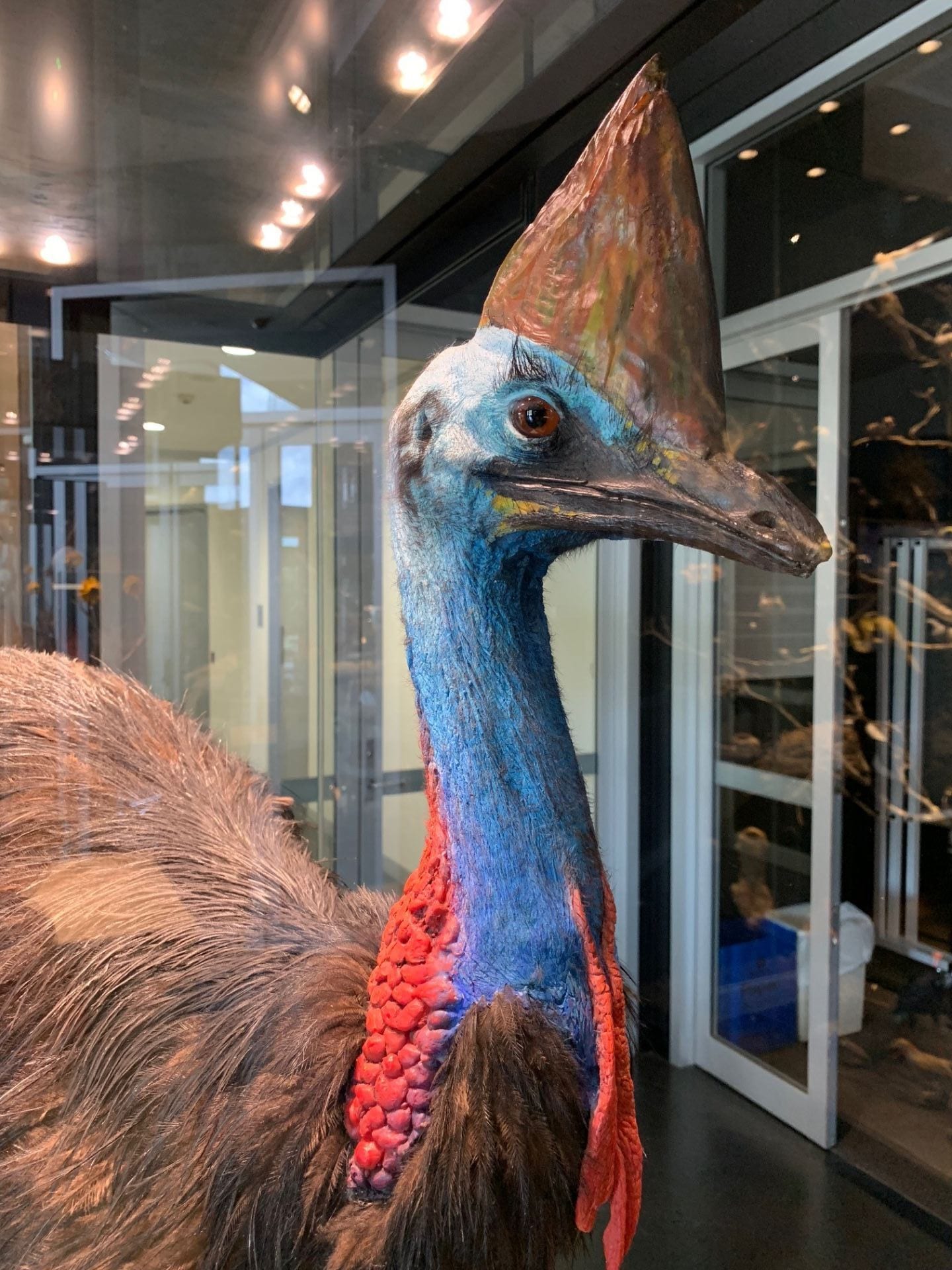The UNE Natural History Museum’s latest addition, a Southern Cassowary, Casuaris casuaris johnsonii, arrived in Armidale in October and had been patiently waiting for a name.
Last month, the UNE Discovery team kicked off a naming competition and we are pleased to announce that “Connie” is the chosen name. Our three judges unanimously decided this was the perfect fit for our Queensland girl. Congratulations to everyone who entered the competition. There were some interesting, funny, serious and creative names entered. Special congratulations to Lisa Randall who entered our competition with the winning name. Your prize is the honour of our cassowary forever being known as Connie.
How did the cassowary end up at UNE? UNE’s cassowary was found near Mission Beach in Queensland after being caught in a pig trap several years ago. At that time, Dr Hamish Campbell from UNE, was undertaking a cassowary research project nearby and managed to secure a permit to have the bird transported to UNE in Armidale. Intact adult cassowaries are very difficult to obtain as the majority of deaths are caused by traffic strike and result in unfortunate disfiguring of the specimen, so although it was a fatal accident, it was a real find for UNE.
The bird was placed in UNE’s Zoology freezer room and was used for modelling purposes and to answer specific scientific questions around its mechanical features. Over the ensuing years, the cassowary remained in the freezer, its future undecided. When Narelle Jarry, UNE’s Curator, Cultural and Teaching Collections, heard about the bird, she hatched a grand plan. The cassowary would make a fantastic addition to the UNE Natural History Museum!
Cassowaries are as tall as a person, with a high helmet on their heads. They have a vivid blue neck and long drooping red wattles. The southern cassowary is found only in the tropical rainforests of north east Queensland, Papua New Guinea and some surrounding islands. The southern cassowary is Australia’s heaviest flightless bird, but the emu is taller. (Ref: www.ehp.qld.gov.au)
If you’ve not seen a Southern Cassowary up close, call in to visit the Natural History Museum. The museum is open Monday-Friday 9:30am-4:30pm weekdays, and closed on weekends and public holidays. More info: www.unenaturalhistorymuseum.org.au

